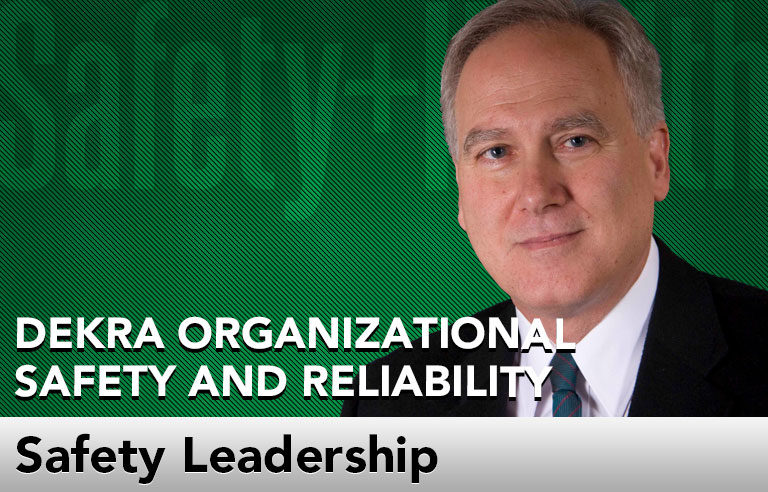Safety Leadership: Engaging with others for safety

Editor’s Note: Achieving and sustaining an injury-free workplace demands strong leadership. In this monthly column, experts from global consulting firm DEKRA Organizational Safety and Reliability share their point of view on what leaders need to know to guide their organizations to safety excellence.
Engagement leads to marriage: You need to commit. Committing doesn’t come from a casual conversation. Committing implies a life-changing, ongoing conversation. Applied to leadership, engagement is defined as helping others to commit and succeed by listening. You need to see where they’re coming from. You need to understand their perspective. You need to show them you’re worthy of their trust.
Engagement is important today because, for most of the year, our interaction with others has largely been virtual. Even when the COVID-19 pandemic subsides, it’s likely that part of our workplace interaction will continue as virtual engagement. The prolonged switch to virtual interaction is creating greater isolation for workers over time.
That’s why it’s important to engage with your people now. Leaders have an opportunity to revisit the key concepts of engagement and understand how they’ll help them reconnect with workers in ways that are authentic and motivating.
Key concepts of engagement
Leaders need to understand these five key concepts of engagement:
Engaging means interacting. Leaders need to be with people – on the phone, in a virtual meeting or face to face. They can’t just hide away, send emails and think they’re engaged. Instead, they have to directly interact with people.
Engaging means treating everyone as unique. Equity is now an important part of the public conversation. Leaders need to understand what it really means. If I’m a leader of a crew, I know not everyone is equal in terms of their skills and ability. But where they are equal is deserving of respect. So, I must treat my veteran worker with same level of respect as I do my apprentice.
Engaging means understanding others and helping them to see what’s in it for them. As a leader, you want work done safely. Also, you want your workers to want the same thing. That means you have to understand where they’re coming from. The only way to create the kind of environment in which workers feel comfortable talking with you is if you show them you know how to listen.
Engaging means providing support, feedback and guidance. Feedback is key. You have to be invested in the success of your workers and making them get better. So after giving them feedback, you have to work with them to help them succeed.
How leaders can engage
Leadership must understand that you can’t engage to somebody, you have to engage with somebody. In other words, the willingness has to be there to become a partner with the workforce for safety to really work. To help make that happen requires four elements of engagement.
Understanding: Leadership must interact with others to gain an understanding of their work-related needs, aspirations, strengths and challenges. Knowing your people isn’t just knowing the names of their spouse or kids. Knowing requires knowing them as a person: Who are they? What are their aspirations? Where do they want to move in the organization?
Planning to engage: Before you meet with anyone, have an agenda tailored to that person. If the employee is a veteran worker, have a conversation that seeks his or her knowledge. If he or she is new to the organization, plan to talk about mentoring. If you don’t put time on your schedule to engage people individually, it won’t happen, so make sure this becomes a priority.
Providing support: Providing workers the feedback and guidance that will encourage their commitment and enable them to move toward success in meeting objectives is critical.
Monitoring progress: This requires observing and gathering feedback, as well as giving feedback.Success is possible when leaders listen and observe, as well as track where their workers are on their journey. Don’t hesitate to offer that feedback. It’ll tell workers that you care enough to engage with them and that you’re invested in their positive outcome.
Engaging is the start of an ongoing productive relationship between you and your workforce. Do it well and the benefits are long-lasting.
This article represents the views of the authors and should not be construed as a National Safety Council endorsement.
 DEKRA principal consultant Paul Angelo employs his more than 30 years of consulting and program management experience to analyze, design and implement culture and safety leadership improvement processes that help his clients make a step-change in safety performance.
DEKRA principal consultant Paul Angelo employs his more than 30 years of consulting and program management experience to analyze, design and implement culture and safety leadership improvement processes that help his clients make a step-change in safety performance.
Direct to your inbox: Sign up to be notified in email about new "Safety Leadership" columns.
Post a comment to this article
Safety+Health welcomes comments that promote respectful dialogue. Please stay on topic. Comments that contain personal attacks, profanity or abusive language – or those aggressively promoting products or services – will be removed. We reserve the right to determine which comments violate our comment policy. (Anonymous comments are welcome; merely skip the “name” field in the comment box. An email address is required but will not be included with your comment.)

